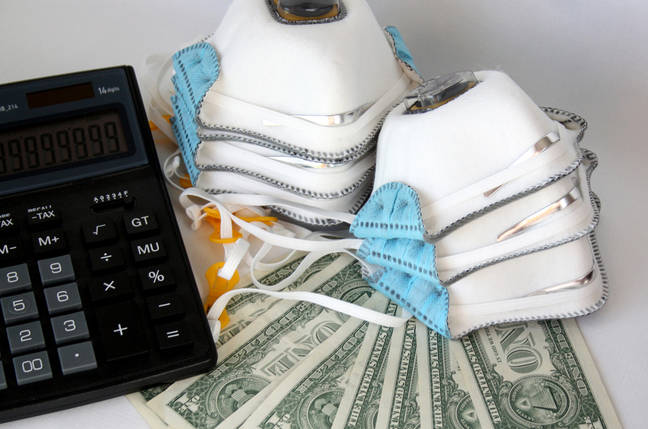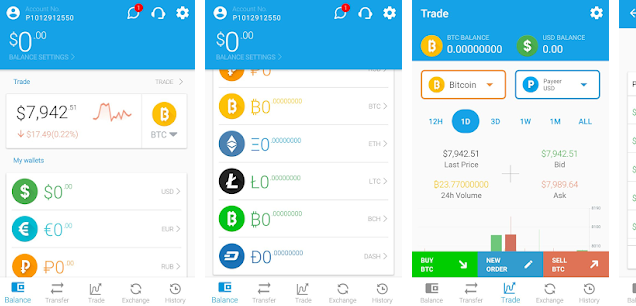Manufacturers can use the information provided by process costing to make informed decisions about expanding their production capacity, introducing new products, or investing in new technology. Process costing is a method for goods-producing in large batches through standard processes. Each lot of manufacturing goods get into one process from another process, and the cost of each process is allocated and assigned to products. This problem is handled through the concept of equivalent units of production. The process costing procedure is explained in more detail in the next example. Process costing refers to a type of costing procedure commonly adopted by factories.
Summer Spending Pressure Fuels Loan Fee Fraud Fears – Infosecurity Magazine
Summer Spending Pressure Fuels Loan Fee Fraud Fears.
Posted: Wed, 09 Aug 2023 09:00:00 GMT [source]
It allows companies to track product cost performance by production location or department—information that can be used to help determine which products are most profitable. Process Costing, also called job-order costing, assigns total manufacturing costs to the units being produced. Process Costing is a system of product cost allocation used in merchandising and industry.
Difference Between Job Costing and Process Costing
Job costing is less complex and easier to use compared to process costing. On the contrary, process costing provides detailed information about each activity involved in the production process. Employees play a crucial role in the success of the process costing system.
Changes to the cost accounting process should be made with caution and transparency to avoid any ethical concerns. Another ethical consideration is the potential conflict of interest when managers are responsible for production and cost accounting. In such a scenario, managers may be inclined to manipulate cost data to meet production goals, leading to ethical concerns. A student’s first thought is that this is easy—just divide the total cost by the number of units produced.
- There may also be loss of a different nature, i.e., loss arising out of unexpected or abnormal conditions.
- Using process costing, a seltzer bottling company would assign costs to each stage in the bottling process.
- The system provides accurate cost data, allowing the manufacturers to calculate the cost of goods sold and the inventory value on hand.
- In Process costing, the plant is divided into some processes where the production is performed either sequentially, parallelly or selectively.
The weighted average method involves calculating the cost of production based on the average cost of materials and labor used in each production stage. As a process costing example, ABC International produces purple widgets, which require processing through multiple production departments. The first department in the process is the casting department, where the widgets are initially created. During the month of March, the casting department incurs $50,000 of direct material costs and $120,000 of conversion costs (comprised of direct labor and factory overhead). The widgets then move to the trimming department for further work, and these per-unit costs will be carried along with the widgets into that department, where additional costs will be added.
Calculate Applicable Costs
It is essential for manufacturing businesses to carefully consider the factors involved in selecting a process costing method and to ensure that they implement it correctly. Overhead costs can vary significantly from one production run to another, and this variability can impact the selection of a process costing method. If the variability in overhead costs is low, a method like the standard cost method may be adequate. However, if the variability is high, a more detailed method that considers the actual overhead costs, such as the actual cost method, may be more effective. Instead, the cost of goods manufactured (COGM) is produced using process costing.
What Type of Cost Accounting System Do Video Game Makers Use … – J Station X
What Type of Cost Accounting System Do Video Game Makers Use ….
Posted: Thu, 03 Aug 2023 09:04:43 GMT [source]
(k) Avoidable and unavoidable process losses arise at different stages of production. (2) Output of the first processes becomes the input for the next process. The process will continue until it reaches the final process account where it is transferred to finished stock A/c. (1) Each process represents a distinct stage of production for which a separate process account is prepared. Some process industries transfer the finished goods from one process to the next process at a price above cost.
Better Cost Control
Thus, some companies often prefer to use the process-costing system. Homogeneous items are products that cannot be distinguished from one another — for example, a bin of screws of the same size and type. These similar products all generally flow through a number of stages during the production process. To use the process costing approach to accounting, companies determine the direct costs and manufacturing overhead for each of those stages. By effectively implementing process costing, businesses can make informed decisions, set competitive prices, and maximize profitability.
Technology can be used to integrate the cost accounting system with other systems, such as inventory management, financial reporting, and enterprise resource planning (ERP) systems. Integration with these systems can improve data accuracy, reduce data entry errors, and provide a holistic view of the manufacturing process. Technology can automate the data collection process, reducing the risk of errors and improving the accuracy of cost calculations.
Again often by-products are produced automatically at the end of each process, which are of same importance to the main product. For example kerosene oil, diesel, petrol, and other similar products are produced from the same crude oil. In process costing is suitable for such industries the method of cost accounting used is known as process costing. Using software for process costing can revolutionize how businesses manage their manufacturing operations and streamline their cost accounting processes.
Another important feature of the process costing is that the production goes on without interruption and there is no need for arranging specifications for meeting any special order. In a steel mill for example, when a customer orders a certain quantity, no special arrangements will be made for him since the order will be executed out of quantity produced in general. (vii) There is indispensable loss in the process of production. It may be due to inherent nature of the material used for production i.e., loss may occur due to chemical action, loss in weight and evaporation etc.
Important Features of Process Costing
(ii) The finished product of one process becomes the raw material for the next process. (iii) The finished product of each process is treated as the raw material of the subsequent process. (i) The production is divided into various stages (known as processes) and each process is carried out by a separate cost centre or department. (3) All direct and indirect costs are classified according to the process and charged to respective process accounts. Here’s how software like Katana can help businesses with their process costing. Take your business to the next level with Deltek ComputerEase, the industry-leading job cost accounting software for construction.
Altogether, process costing helps manufacturers find the best ways to improve processes, eliminate inefficiencies, and stay competitive. These are the materials that can be specifically identified and directly traced to a particular production process. Direct materials include raw ingredients used in manufacturing a product, such as wood, steel, or plastic. Job costing is a way to track costs for each product or service you provide. It’s also known as «product costing.» This type of accounting documents how much your company will need to budget to produce one unit of a particular product.
This leads to better communication and a greater understanding of the business’s cost structure. Process costing is appropriate when there is mass production of similar goods (homogenous products). Calculating the unit cost for any work performed during a period is a key part of a production report. The cost of finished output of one process becomes the input cost of the next process.
Service providers can break down the production process into individual steps and assign costs to each step to calculate the service cost. The chemical industry uses process costing to calculate the cost of producing chemicals. This industry produces chemicals in large quantities with a consistent manufacturing process, making process costing a suitable technique.
For certain types of manufacturers, process costing is the most practical and efficient accounting method for determining product costs. It can be difficult to accurately assign costs to work in progress, for example. The finished product of one process is used as a raw material for the next processes until completion. The product of the last process is transferred to the finished stock account. (v) The cost of production per unit is the average cost which is obtained by dividing the total process cost by the total number of units manufactured.
Repetitive process industries involve the production of standardized products, but with some variations in specifications or features. The production processes are repetitive, and the same or similar operations are performed repeatedly to produce a range of products. Examples of repetitive process industries include food processing, textile manufacturing, and beverage production. Continuous process industries involve a continuous and uninterrupted flow of production. The production processes are highly automated and operate 24/7. Here, products are produced in large volumes without interruption, and the production flow is constant.
A separate account is opened for each process or distinct operation to which all expenditure incurred thereon is charged. (x) Inter-process profits are also kept in mind while transferring the output at market price to another process. It will depict the market price and will be helpful in checking the inefficiency and losses taking place in a process. (iv) The units of the commodity produced are homogeneous and identical in nature.
The amount of materials, labour and overheads incurred on all units are same. X) The semi-finished products are expressed in terms of complete products. Vii) The cost of any particular unit is the average cost of manufacture over a period. The output of a process may be transferred to the next process at market price to ascertain whether the product is profitable or not. A reserve for profit has to be created to find out the correct profit and to make valuation correctly of the closing stock.




